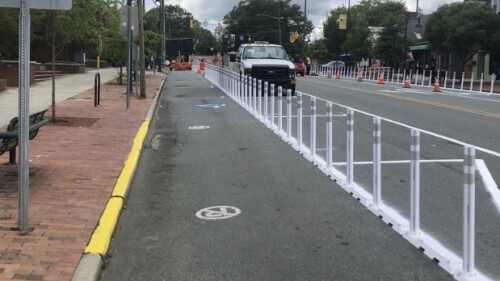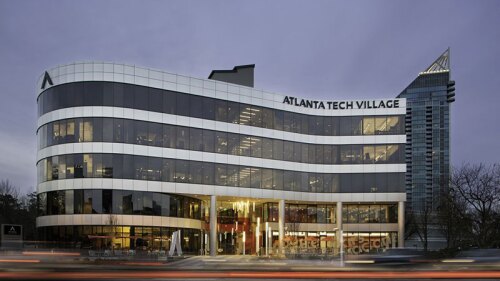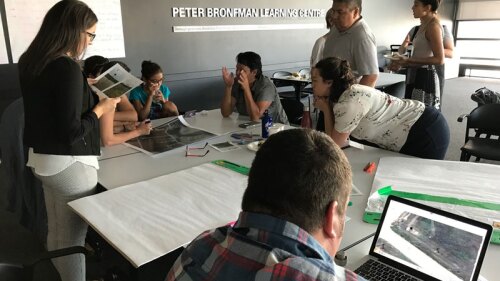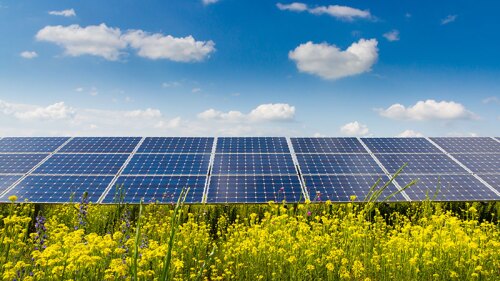Topics
Capital Markets and Finance
There is no end in sight for the long-lived U.S. economic and real estate market expansion, according to leading real estate economists. These projections are based on a special year-end version of the “ULI Real Estate Economic Forecast,” prepared by the ULI Center for Capital Markets and Real Estate. The forecast is based on a survey completed in December by 27 economists/analysts at 24 leading real estate organizations.
Some of the best minds in commercial real estate seemed a lot less worried at the 26th annual ULI/McCoy Symposium on Real Estate Finance, held in December in New York City. Participants’ top message: investors keep pouring their money into office towers, apartment buildings, and other real estate in the United States despite high prices, worries that the U.S. economy could fall into a recession, and the uncertainty that accompanies a presidential election year.
Sam Chandan, associate dean of New York University’s Schack Institute of Real Estate and host of the Real Estate Hour on SiriusXM Radio presented his economic forecast for 2020 at a ULI New York event in November.
Design & Planning
Physical distancing and restriction of travel were some of the earliest and most effective and widespread strategies enacted worldwide to control the transmission of COVID-19. Roads emptied of typical automobile traffic, and many were used in new ways to support the needs of communities. Cities used roadways to create space for walking and bicycling, outdoor commerce, and queuing for essential services, with the implementation of these programs moving abnormally quickly to respond to an increased demand.
In recent years, companies from Google to McDonald’s have flocked to Chicago’s Fulton Market neighborhood just west of downtown, attracted by its historic feel, acclaimed restaurants, and pool of talented young residents. Now it has a new draw—Fulton East, a 12-story building that champions biophilic design and cutting-edge strategies for promoting health and wellness in the wake of the pandemic.
Fall meeting attendees toured on foot this dynamic and exciting community in Chicago that is evolving differently than any other Chinatown in America. A neighborhood rich with historic and award-winning contemporary architecture, this proud community is fighting gentrification while retaining its cultural significance.
Development and Construction
ULI’s Greenprint Center for Building Performance is excited to announce that four District Councils and three National Councils have been selected to participate in the second Net Zero Imperative Cohort. Thanks to the generosity of financial donations from ULI members through the ULI Foundation, the program offers grants for technical assistance and ongoing implementation support to a selection of global cities to help accelerate efforts toward net zero.
Real estate executive Preston Butcher and his wife, Carolyn Butcher, have donated $1.5 million to the ULI Foundation to create the ULI Homeless to Housed Initiative to identify and disseminate best practices that enable communities to provide housing for people experiencing homelessness.
Across the Trinity River from downtown Dallas, Oak Cliff is one of the city’s oldest areas, dating back to the 1880s. In its heyday, it contained stable, diverse neighborhoods, including what is now one of the nation’s few intact freedmen’s towns, the 10th Street Historic District. Attendees of ULI’s 2022 Fall Meeting in Dallas can tour new developments that are transforming this area with an eye toward equity.
Resilience and Sustainability
Atlanta Tech Village owns and occupies a 100,000-square-foot (92,903 sq m) building that was built in 1985 in Atlanta’s Buckhead submarket. Ownership’s goals were increasing member (tenant) comfort, lowering operating expenses, and maximizing decarbonization opportunities.
This Urban Landseries introduces real estate and built environment professionals to Indigenous-led organizations working on issues of environmental and climate justice in the built environment as they pertain to Indigenous communities. In addition to profiling the work of these organizations, the series covers why these intersections are critical to understand within the wider conversation on climate change and social equity. This iteration is a follow up to a similar series of profiles created in 2020 on environmental justice.
Indigenous Climate Action is an Indigenous-led organization guided by a diverse group of Indigenous knowledge keepers, water protectors, and land defenders from communities and regions across the country. We believe that Indigenous Peoples’ rights and knowledge systems are critical to developing solutions to the climate crisis and achieving climate justice.
Issues and Trends
Third edition evaluates top 30 global powerhouses report reveals world’s leading urban hubs rise in popularity post pandemic. Challenges include new economic conditions, rising costs, adaptation to hybrid work, innovation gaps, the climate imperative, and transition to social, mixed-use districts.
Guy Kawasaki—chief evangelist at Canva, former chief evangelist for Apple, and bestselling author—summed up insights gleaned from his years in tech and as host of the Remarkable People podcast, interviewing such luminaries as Margaret Atwood, Tony Fauci, Jane Goodall, and Steve Wozniak.
As congregations across North America grapple with shrinking membership and aging facilities, a new opportunity is emerging: transforming faith-owned land into affordable housing and community-serving spaces. At the 2025 ULI Fall Meeting in San Francisco, panelists in the session “Spiritual Brownfields: Declining Congregations and Opportunities for Housing on Faith-Owned Land” explored how churches and developers are partnering to bring mission-driven housing to underused sacred sites.










